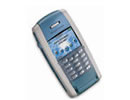'ZDNET Recommends': What exactly does it mean?
ZDNET's recommendations are based on many hours of testing, research, and comparison shopping. We gather data from the best available sources, including vendor and retailer listings as well as other relevant and independent reviews sites. And we pore over customer reviews to find out what matters to real people who already own and use the products and services we’re assessing.
When you click through from our site to a retailer and buy a product or service, we may earn affiliate commissions. This helps support our work, but does not affect what we cover or how, and it does not affect the price you pay. Neither ZDNET nor the author are compensated for these independent reviews. Indeed, we follow strict guidelines that ensure our editorial content is never influenced by advertisers.
ZDNET's editorial team writes on behalf of you, our reader. Our goal is to deliver the most accurate information and the most knowledgeable advice possible in order to help you make smarter buying decisions on tech gear and a wide array of products and services. Our editors thoroughly review and fact-check every article to ensure that our content meets the highest standards. If we have made an error or published misleading information, we will correct or clarify the article. If you see inaccuracies in our content, please report the mistake via this form.
Sony Ericsson P800


Sony Ericsson P800
pros and cons
- Abundance of features well-integrated functions comes with many accessories.
- Not optimised for thumb-based input lacks predictive text input software not compatible with Windows 98.
- Editors' review
- Specs
The past year has been a difficult one for Sony Ericsson. Rocked by losses and a largely indifferent 2002 portfolio, the company has nonetheless persisted into 2003. But perhaps things are looking up as the company introduces its flagship P800, a camera-phone/PDA that rivals the best on offer from Nokia and Motorola.
Design
The blue-and-silver P800 has a size to match its list of functions. At 117mm by 59mm by 27mm, its bulk is comparable to that of the Nokia 7650. It also weighs in at a hefty 158g. Although that's a quite a bit to lug around, it's significantly lighter than carrying a mobile phone and a handheld.
The P800 is technically a successor to Ericsson's Smartphone line, and retains the same form factor. The main body of the phone is longish and features a large touch-sensitive display. A plastic numeric pad can be placed over the bottom half of the P800 so it resembles an ordinary, if oversized, cellphone. In this position, this keypad becomes the primary input method, with the touch-screen largely disabled. Here, the P800's greatest flaw is exposed: unlike the Nokia 7650, the P800 just isn't optimised for one-handed, thumb-based manipulation.
In this mode, the menu interface is sometimes inconsistent. For instance, locking and unlocking the keypad requires two different pairs of key presses. Furthermore, the buttons, which are essentially little styluses, aren't always responsive and lack key depth. Some users will also be put off by the fact that the P800 doesn't offer predictive text input. A Sony Ericsson spokesperson told us that the company is considering releasing predictive text as a software upgrade, but nothing is confirmed yet.
Thankfully, the P800's flip cover/keypad can be discarded altogether so the phone can be used in pen-based mode. This way, the device's bright and sharp 4,096-colour display is revealed in its entirety. Although it's not as wide as some handheld screens, its length is comparable.
A thin, translucent stylus hangs from the side of the phone, and can be used for writing text in CIC's Jot. This performs credibly when recognising handwriting, but some users will be able to crank out text messages quicker using predictive text.
In this pen-based mode, users can also access the P800's full list of applications. The interface here is not difficult to navigate, but it takes some time to get used to how the programs are organised. The most important applications can be marked as tabs on the main screen for easy access.
Features
The P800 is a multimedia player, digital camera, Symbian-based PDA and cellphone that supports GPRS, MMS (Multimedia Messaging Service), tri-band GSM, Bluetooth and wireless Java. It's one thing to lump all these features into a single device, but quite another to integrate them seamlessly. The good news is Sony Ericsson has proven itself before with the T68i and CommuniCam digital camera add-on. The P800, for the most part, also does well in this respect.
Many users will probably be looking to use the P800 for mobile Web surfing. If you have a GPRS-enabled account, surfing with the P800 can be as simple as popping in your SIM card, turning on the phone and opening the browser.
As for the camera, this function can be accessed from a single button on the right-hand side. The same button also releases the shutter. The P800's lens is positioned on the back of the phone. Although not covered, it is slightly recessed to prevent scratches. The image quality is average as far as camera-phones go. The maximum resolution of 640 by 480 pixels is good enough, but the images lack sharpness. You can attach pictures to entries in your address book, so the right photo pops up whenever a friend calls.
The P800 is also capable of playing various kinds of media, including video clips. But it's the audio capabilities that phone users will enjoy. The device plays anything from MIDI to MP3 and WAV files. What's impressive is these audio files can be used as ringtones or even alarms. The downside is the speakers can be too soft in external environments.
The P800 comes with a cradle so you can synchronise your P800 with a notebook or desktop as you're charging it. Synchronisation can also be done using infrared or Bluetooth. The software is straightforward to install, but note that the PC Suite is only compatible with Windows 2000, ME and XP. Windows 98 users will have to wait for further updates from Sony Ericsson.
Although Sony Ericsson includes some applications and games on a CD-ROM, the acid test is how third-party application providers will support the software. Already, a version of the first-person shooter Doom has been ported over to the P800. The P800 comes with 12MB of internal memory, with more than half of this free for use out of the box. If that's not enough, it also ships with a 16MB Memory Stick Duo card.
Performance
Reception proved acceptable, although signal strength was poor in areas of weaker network coverage. One problem we faced was the P800 occasionally failing to register the SIM card. Voice quality was average.
Battery life was decent. Rated at up to 13 hours of talktime and 400 hours on standby, the 1,000mAh Lithium-polymer battery expired after more than two days of usage.
Conclusion
The P800 comes at a price of about £528.75 (inc. VAT) for the handset alone, or £293.75 (inc. VAT) with an O2 contract (prices from Expansys). That's certainly a lot to shell out, but the P800 delivers a great deal in return, both in terms of features and accessories. Included in the box are a 16MB Memory Stick Duo card, an adapter for older Memory Stick cards, a hand strap and a pouch, as well as three styluses. Packing in all these parts also eliminates a problem that some users have cited -- a dearth of Sony Ericsson accessories on the market.
The P800 was a work in progress for a long time, but we think it's not the finished product yet. We expect Sony Ericsson to release important updates in the coming months, as it has done for the T68. Right now, the P800 falls just short of an Editors' Choice award. But after a year of virtual stagnancy, the P800 is a big step forward for Sony Ericsson. For power-hungry phone users, the P800 -- despite its interface issues -- should satisfy you.